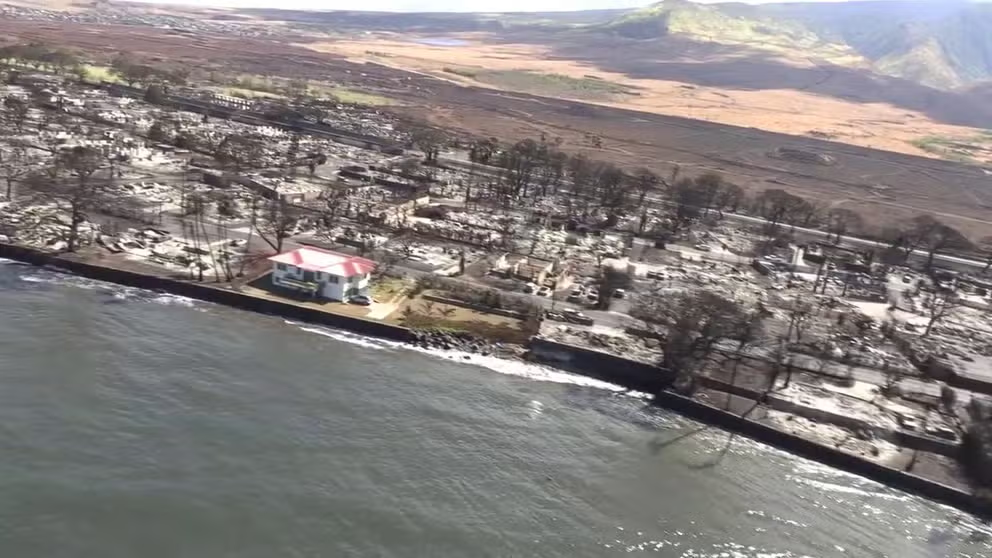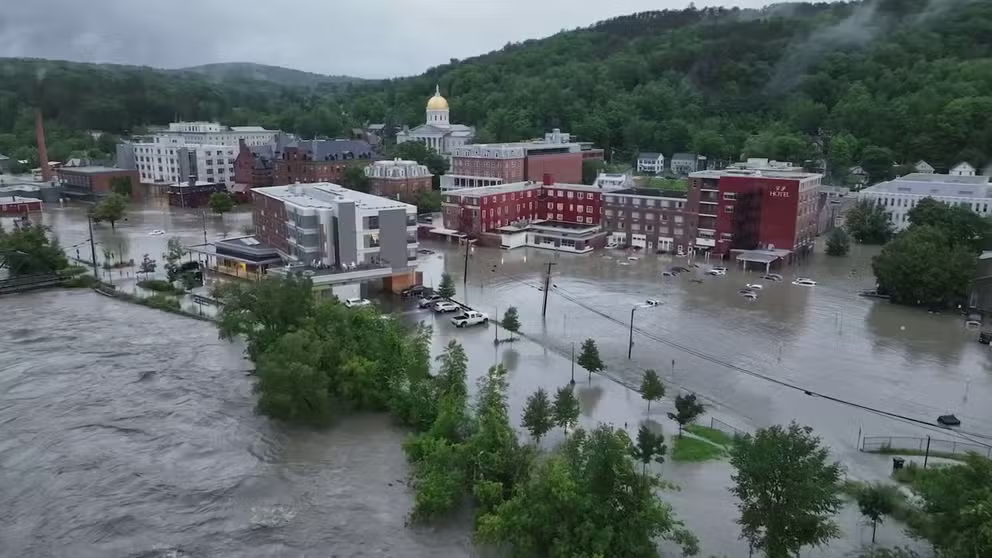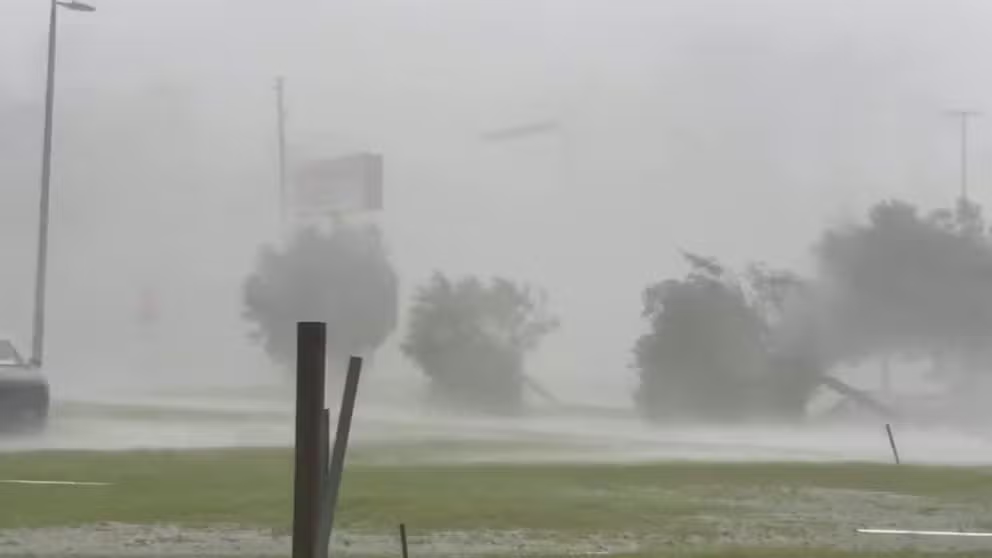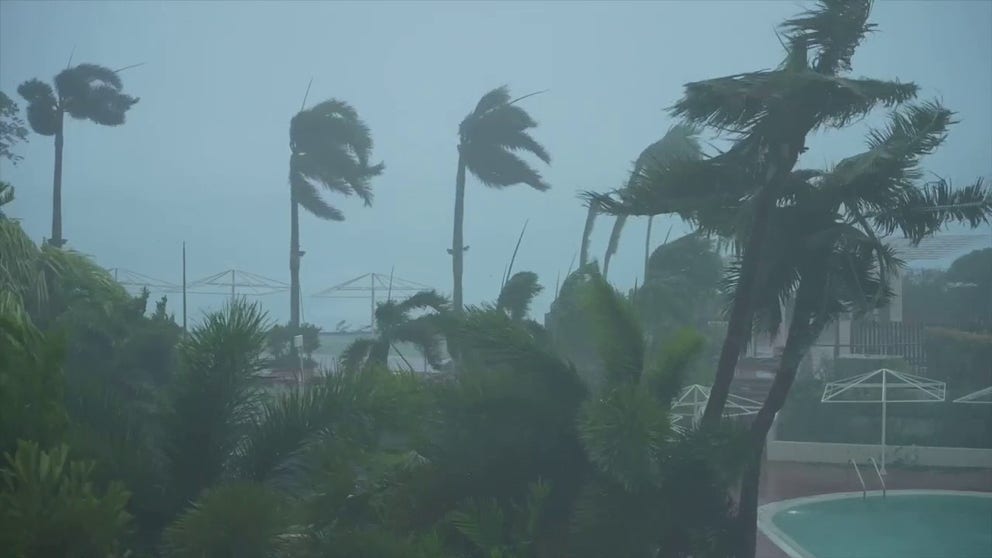NOAA: US sees record number of billion-dollar weather, climate disasters in 2023
According to NOAA, 137 separate billion-dollar disasters have killed at least 5,500 people and caused more than $1 trillion in damage in the U.S. during the past seven years.
2023 Tops NOAA's list of billion-dollar disasters
FOX Weather takes a look back at some of the record 23 billion-dollar disasters that the U.S. has racked up so far this year. A NOAA applied climatologist talks about hitting the record and what we can expect in the future. (Video from September 2023)
One week after the world rang in the new year, NOAA's National Centers for Environmental Information (NCEI) released its final update to its 2023 billion-dollar disaster report and confirmed that 2023 was a historic year for the number of weather and climate disasters across the U.S.
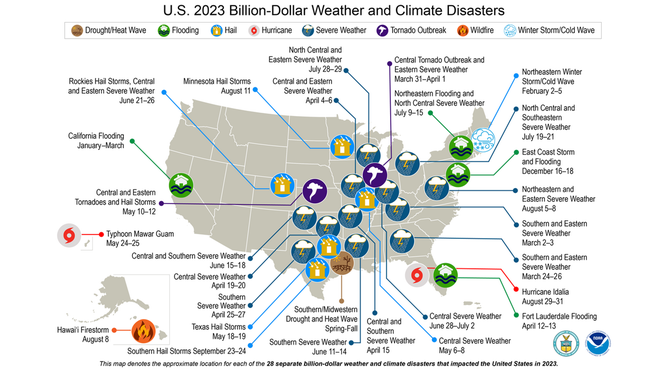
A map showing billion-dollar weather and climate disasters in the U.S. in 2023.
(NOAA / NOAA)
The final update showed 28 weather and climate disasters in 2023, costing at least $92.9 billion. That is above the previous record of 22 set in 2020. That number may rise, however, when the cost of a powerful storm that slammed the East Coast in the middle of December is calculated, NOAA said.
NOAA’s report also said there were at least 492 direct or indirect fatalities as a result of disasters in 2023 – the eighth-most disaster-related fatalities in the contiguous U.S. since 1980.
2023 billion-dollar disasters in US
The report highlighted several deadly, billion-dollar disasters in the U.S. in 2023, including a heat wave, wildfires, severe weather, hurricanes, flooding and severe winter weather.
Northeast polar vortex
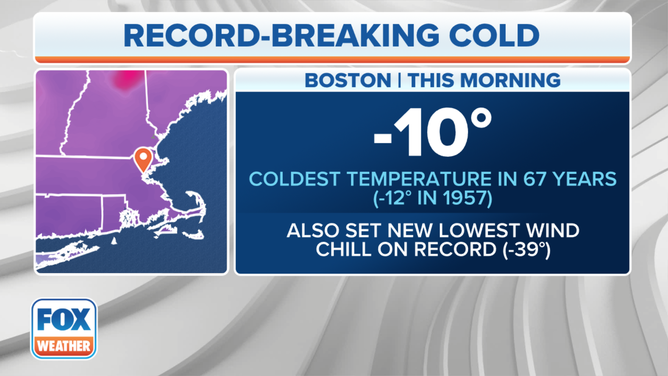
A recorded 10 degrees below zero made it the coldest morning in Boston in 67 years. (Feb. 2023)
(FOX Weather)
In February, a short-lived but impressive and dangerous polar vortex invaded the Northeast and New England, plunging temperatures across the region into negative territory.
Boston experienced its coldest morning in decades, with a morning low temperature on Feb. 4 of -10 degrees and a wind chill of -39 degrees.
Hawaii wildfires
New video of damage from Lahaina brush fires
An aerial video of damage in Lahaina, Hawaii, from deadly brush fires.
Hawaii experienced the deadliest wildfire in modern U.S. history last August when at least 100 people were killed in the town of Lahaina on the island of Maui.
The National Weather Service office in Honolulu issued Fire Weather Warnings before the fires.
Officials said they didn't use outdoor warning sirens when the fire began and began to spread because they said they feared residents would have fled uphill toward the flames rather than toward the ocean for safety.
Residents were allowed to start returning to their homes a month after the disaster.
Deadly Southwest heat wave
Deadly heat wave locked in for next 2 weeks
A deadly heat wave continues to break records in the Southwest as relief won't come for at least two weeks with the start of monsoon season. Above average temperatures and heat advisories span all across the Southern U.S. and Deep South into Florida. (Video from July 2023)
It was a deadly summer across the Southwest as the region spent weeks with temperatures well above 100 degrees from Arizona to Texas.
According to the Maricopa County Department of Public Health in Arizona, 579 heat-associated deaths were confirmed since April 11, 2023, with 56 deaths still under investigation. The number of confirmed deaths is well above 2022's record of 435 deaths.
It also marks the seventh consecutive year of record heat-related deaths since the county began keeping track in 2006.
Major flooding
Watch: Haunting drone video shows Montpelier, Vermont, submerged in floodwaters
Dramatic drone video shows Montpelier, Vermont, submerged in floodwaters. Torrential rain across portions of the Northeast and New England sent rivers and streams above their banks leading to widespread flooding.
There were four major flooding events across the U.S., including flooding caused by atmospheric river storms in California.
Florida, too, experienced major flooding. Fort Lauderdale experienced a 1-in-1000-year flood in April.
The Northeast and New England also experienced historic flooding in July. Rivers in Vermont, for example, crested higher than Hurricane Irene levels in August 2011 and were topped only by the Vermont flood of 1927 – the greatest natural disaster in the state's history.
Flooding was also reported along the East Coast in the middle of December.
Tornado, severe weather outbreaks
Rolling Fork, MS completely devastated by deadly tornado
Rolling Fork, MS has been completely devastated by a deadly tornado. Drone video shows the extent of the damage. (Video from March 2023)
There were two tornado outbreaks in the U.S. in 2023, including a monstrous tornado that tore through the town of Rolling Fork, Mississippi, killing at least 20 people in March.
NOAA’s report said there were 17 severe weather and hail events reported across the U.S. in 2023.
Tropical cyclones
Watch: Powerful winds from Hurricane Idalia send trees, debris flying through the air in Perry, Florida
Dramatic video recorded in the eyewall of Hurricane Idalia shows trees and other debris flying through the air as the Category 3 hurricane was making landfall with 125 mph winds early Wednesday morning. (Video from August 2023)
The tropics were also in the headlines in 2023, with Hurricane Idalia hitting Florida in August.
Watch: Typhoon Mawar lashes US territory of Guam with destructive winds
The U.S. island territory of Guam was lashed by Typhoon Mawar on Wednesday, May 24, 2023. Destructive winds and torrential rain was reported across the island. Nearly 98% of Guam was without power and a 108 mph wind gusts was reported at Guam International Airport. (Video from May 2023)
In the Pacific Ocean, Typhoon Mawar slammed the U.S. territory of Guam with winds up to 140 mph.
The cost of disasters in US
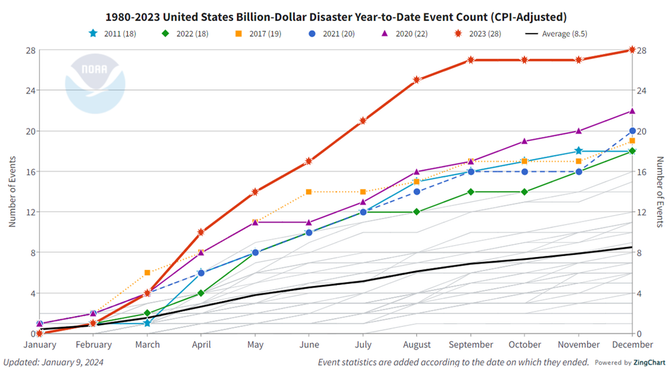
Month-by-month accumulation of billion-dollar disasters for each year on record. The colored lines represent the top 6 years for most billion-dollar disasters. All other years are colored light gray. NOAA image by NCEI.
(NOAA / NOAA)
NOAA said that with all years so far in this decade, 2023 was extremely active in regard to disasters.
The red line in the chart above shows the fourth consecutive year (2020-2023) in which there were 18 or more separate billion-dollar disasters.
That marks "a consistent pattern that is becoming the new normal," according to NOAA.
The black line shows the annual average between 1980-2023 was 8.5 events (CPI-adjusted) every year. According to the chart, the annual average for the most recent five-year period was 20.4 events (CPI-adjusted).
NOAA said that over the past seven years, 137 separate billion-dollar disasters have killed at least 5,500 people and caused more than $1 trillion in damage in the U.S.
According to NOAA’s report, one of the drivers of the cost is that the U.S. has been impacted by landfalling Category 4 or 5 hurricanes in five of the last seven years., including hurricanes Harvey, Irma, Michael, Laura, Ida and Ian.
The U.S. was spared in 2023, as Hurricane Idalia made landfall in Florida’s less populated Big Bend region.
The report said the rise in the number and cost of weather and climate disasters is due to a combination of exposure and vulnerability, in addition to the fact that climate change is increasing the frequency of weather that can lead to billion-dollar disasters.

